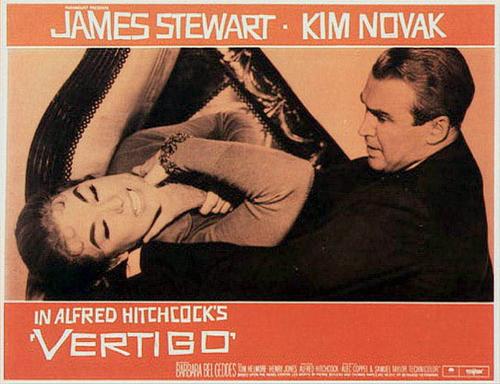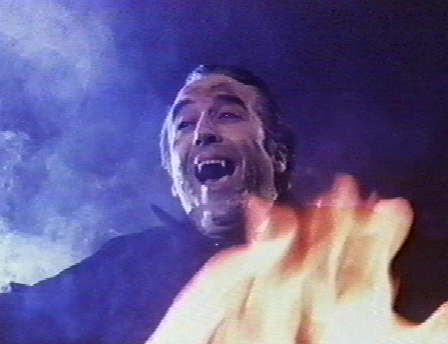A fairground’s painted swings
Thu. February 24, 2005Categories: Abstract Dynamics

Speaking of the pathology of amour, is it anywhere better exemplifed than in the lyrics of ‘These Foolish Things’ (the title track, significantly, of Ferry’s first LP of covers).
What is fascinating about the song’s litany of lost affects (‘wild strawb’ries only seven francs a kilo … the sigh of midnight trains in empty stations… a fairground’s painted swings’) is that the lover features in them only as a series of absences (‘a cigarette that bears a lipstick’s traces… gardenia perfume ling’ring on a pillow’) and is never directly invoked. This, of course, is because there is no ‘loved object itself’. What is loved is the petit objet a, which is not a particular object, but the object as such, the ‘void presupposed by a demand’. The physical and psychical ‘presence’ of the lover is required only as that which allows the assemblage of affects to be given an apparent cohering centre. But, in the end, the lover is just that: the space, the canvas, on which the collage of memories and associations can be arranged.
Nevertheless, even though it is not the lover ‘herself’ that is desired, the lover cannot be dispensed with altogether: otherwise we are in straightforward fetishism. Zizek illustrates the difference between ‘normal’ pathology and fetishism by reference to that scene in Vertigo where Scotty is embracing Judy (re) made-over as Madeleine. The camera cuts away to show his pausing from kissing her to anxiously check that her hair colour is still blond. But this is NOT fetishism, since the fetishist would dispense with the woman altogether and derive his enjoyment from the lock of hair itself.

Vertigo‘s horror lies in its unstinting revelation of the artificiality of desire. Scottie can look into the void presupposed by his demands and still, grotesquely, make the demands. That is the difference between Vertigo and many of the film noirs it references, comments upon and surpasses: it is not , in the end, that he is being deceived by a femme fatale, duped into believing that she is something that she is not. On the contrary, he knows full well that there is no Madeleine. But knowledge is nothing, and the explanation for his continued fixation upon a Madeleine that is not even a ghost is the one provided by Zupancic (see this yesterday’s post): for Scottie to give up his object would be for him to give up himself, to die.
There is no doubt a specifically male relationship to the objet a which Vertigo reveals. This goes some way to answering the question posed by I.T. a while ago, after Zizek: namely, why would men, given the choice of sex with a monkey or sex with a robot always choose the robot? The more disturbing thought is that men would always in practice prefer a robot to an actual woman – and this is why the libidinal economics, if not yet the technical feasibility, of The Stepford Wives are horribly credible.
The text which most explicitly lays bare this male desiring mechanism is Villier de l’Isle Adam’s The Future Eve (1877), which anticipates both Vertigo and The Stepford Wives, as well as Metropolis and Blade Runner.
The story concerns a dissolute decadent who is enchanted with his beloved, Alicia’s, form, but who detests what he considers to be the frivolity and shallowness of her personality. He is persuaded by an inventor-mentor figure (given the name, in some versions, incredibly, of the then still-living Thomas Edison) that he should simply accept an automaton-copy of his lover, prepared by the inventor, which will be a perfect replica in every respect, except that it will be programmed to be a stimulating companion.

‘Edison’ couldn’t be more forthright, more demystificatory, more Lacanian: ‘the creature whom you love, and who for you is the sole REALITY is by no means the one who is embodied in this transient human figure, but a creature of your desire. … This illusion is the one thing you struggle against all odds to VITALIZE in the presence of your beloved, depsite the frightful, deadly, withering nullity of Alicia. What you love is this phantom alone; it’s for the phantom that you want to die. That and that alone is what you recognize as unconditionally REAL. In short, it is this objectified projection of your own mind that you call on, that you perceive, that you CREATE in your living woman, and which is nothing but your mind reduplicated in her.’
Of course, the ‘creative’ force that really animates the loved object is not the freeplay of the Romantic imagination, but the implacable mechanism of the unconscious. It’s for the phantom that you want to die: but such a ‘death’ would mean that the desiring frame that makes sense of the world would survive. The only real death would be one in which that whole framework was destroyed, and the subject was confronted with the ‘white space’ of pure potential.
This is what the subject slaved to the pleasure principle must avoid at all costs. The well-known tedium of Sadean desire is the inevitable consequence when this impasse is honestly confronted. If the object of Sadean desire is, as Zizek, says, the eternally beautiful undead victim, who can suffer all manner of privations and yet be magically renewed forever, then the subject of this desire is, as Burroughs knew very well, the vampire-junky. The vampire-junky must be insatiable and must pursue their desires up to the point of self-destruction, but must never cross the line into annihilation.

The empirical narrative would have it that the junkie is gradually ‘drawn into’ addiction, lured into dependence by a chemical need. But it is clear that the junkie chooses to be addicted – the desire to get high is only the ostensible motivation for the drive, just as ‘winning money’ is only the official alibi for the gambler’s enjoyment.
Burroughs’ paralleling of love with addiction is thus by no means cynical hyperbole. Burroughs understood very well that, if love is addiction (‘If there’s a cure for this, I don’t want it’), then addiction is also a form of love (‘It’s my wife and it’s my life’). There is always, as Gregory Bateson observed in his essay on alcholism, a meta addiction to be dealt with: the addiction to addiction itself. It is on this that Burroughs’ ‘control addict’ Bradly Martin is hooked: ‘I am not AN addict. I am THE addict.’
The lyrical power of Burroughs’ writing – especially in the early cut-up novels, which are consensually dismissed as difficult and boring – is often overlooked. But much of its mechanical melancholia is generated from its displaying of the ‘foolish things’ of desire, the heroin-hacceities of train whistles, radio jingles, billboard images and sexual contact. Although initially random, these affect-collages, when repeated and remixed by memory and desire, become Necessary. Thus only THAT shade of blue for Madeleine’s suit, only THAT shade of lipstick on the cigarette tip, will do.
Yes, the painted swings of desire’s cruel fairground….